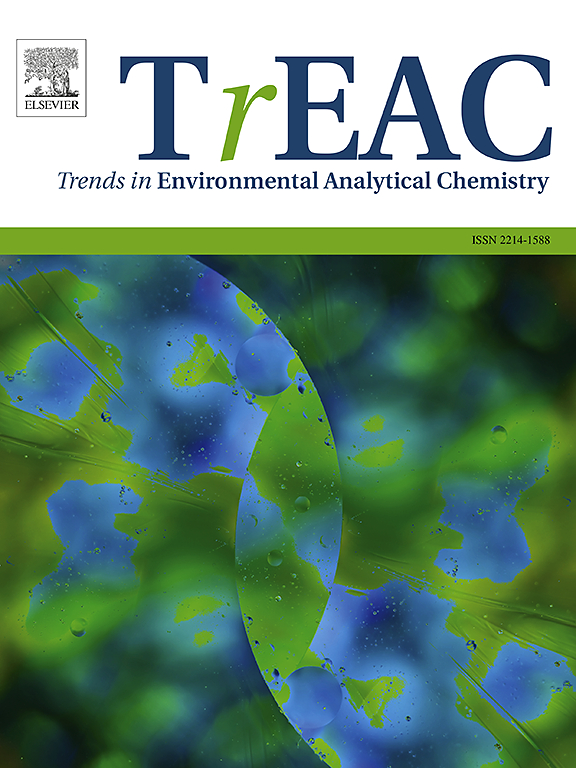Recent advances in three-dimensional (3D) printing of molecularly imprinted polymers (MIPs) for potential environmental applications
IF 13.4
2区 化学
Q1 CHEMISTRY, ANALYTICAL
引用次数: 0
Abstract
In recent years, 3D printing technology, or additive manufacturing, has attracted exceptional interest in several areas of research owing to its rapid prototyping capabilities, reduced fabrication time, one-step production process, and growing variety of functional printing plates. The 3D printing technology involves the sequential deposition or polymerization of thin layers of material to produce the intended object. Despite all 3D printers being designed for the same purpose, their dimensions, resolutions, compatible materials, post-manufacturing devices needed, and cost might differ significantly. Combining molecularly imprinted polymers (MIPs) with 3D printing technology (3D-MIPs) enables reproducible and scalable final fabricated systems. This work covers the advancements of the synergistic integration of 3D printing technology with MIPs for the polymerization phase to allow manufacturing materials with qualities precisely satisfied for the separation of organic and inorganic compounds from water matrices and different samples. The procedures and ideas involved in synthesizing 3D-MIPs are discussed, along with their substantial properties for environmental applications. Particular emphasis is focused on the efficiency of the prepared materials resulting from the designed 3D-MIPs compared to those of the individual entities.
分子印迹聚合物(MIPs)的三维(3D)打印在潜在环境应用中的最新进展
近年来,3D打印技术或增材制造由于其快速原型制作能力,缩短制造时间,一步生产过程以及越来越多的功能印版,在几个研究领域引起了极大的兴趣。3D打印技术涉及到薄层材料的连续沉积或聚合,以生产预期的对象。尽管所有的3D打印机都是为了相同的目的而设计的,但它们的尺寸、分辨率、兼容的材料、所需的后期制造设备和成本可能会有很大的不同。将分子印迹聚合物(MIPs)与3D打印技术(3D-MIPs)相结合,可以实现可复制和可扩展的最终制造系统。这项工作涵盖了3D打印技术与聚合阶段的MIPs协同集成的进步,以允许制造质量精确满足从水基质和不同样品中分离有机和无机化合物的材料。讨论了合成3D-MIPs的程序和想法,以及它们在环境应用中的实质性特性。特别强调的是与单个实体相比,设计的3D-MIPs所制备材料的效率。
本文章由计算机程序翻译,如有差异,请以英文原文为准。
求助全文
约1分钟内获得全文
求助全文
来源期刊

Trends in Environmental Analytical Chemistry
Chemistry-Analytical Chemistry
CiteScore
21.20
自引率
2.70%
发文量
34
审稿时长
44 days
期刊介绍:
Trends in Environmental Analytical Chemistry is an authoritative journal that focuses on the dynamic field of environmental analytical chemistry. It aims to deliver concise yet insightful overviews of the latest advancements in this field. By acquiring high-quality chemical data and effectively interpreting it, we can deepen our understanding of the environment. TrEAC is committed to keeping up with the fast-paced nature of environmental analytical chemistry by providing timely coverage of innovative analytical methods used in studying environmentally relevant substances and addressing related issues.
 求助内容:
求助内容: 应助结果提醒方式:
应助结果提醒方式:


